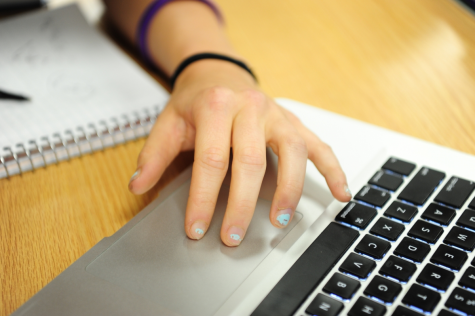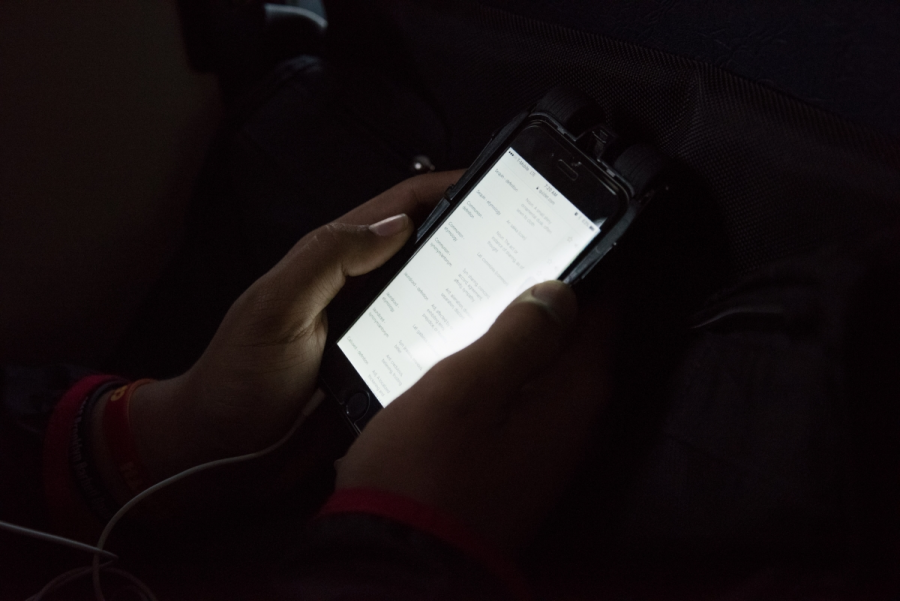Is Your Social Media Account Being Watched?
Social media is used by most students around the school; it is mainly accessed from cellphones.
Schools try to keep up with a rapidly modernizing world, adding ‘Smart Boards’ to classrooms and moving lessons online and into PowerPoints. However, they not only have to keep up with modern technology, but with their students. According to ‘Statista,’ approximately 78% of Americans used social media in 2016. ‘PewInternet’ reports that about 92% of American teens use social media. The number of people using social media has steadily increased in the past decade, and it is predicted that this number will grow in the future.
Twelve states have recently passed laws making it legal for schools to monitor students’ social media accounts.
With the Internet accessible for so many, it becomes easier for students to express themselves and communicate with others. Teens usually post without a second thought as to what the consequences of their actions could be, and they could hurt others without realizing it. Many students who have social media accounts post their genuine thoughts and feelings, and this can help schools to keep students safe.
Twelve states have recently passed laws making it legal for schools to monitor students’ social media accounts, with schools from California, Florida, and Alabama getting into the news due to the success of the programs. Schools hire third-party companies to look through students’ accounts in an attempt to prevent school violence. These companies use geofences, which are virtual barriers based on location, to narrow down the accounts that are being monitored. If a specific account is suspicious, the monitoring can continue outside of the geofence.
A student in Orange County, Florida, was forced to show school officials a private message that she sent from home on her family’s computer, and there have been reports of students having to show the contents of private accounts to teachers. The monitoring of students’ accounts is a controversial subject, with students and parents alike opposing the new policies.
“It’s an invasion of privacy,” said Anika Lamia ’18. “We have rights as students to be able to have our own lives without the school being involved.”
Parents have opposed the monitoring, as they believe that they should be the ones making sure that their kids are behaving.
Yael Kelmer ’17 agrees with this notion. She said, “It’s not the school’s responsibility to get involved, as it’s something that parents should take care of at home.”
The programs are created to monitor students and collect information, but it has not yet been publically stated what the collected information is used for.
Anisa Persaud ‘19 said, “I think that monitoring teens is wrong because we are using our personal accounts, and even though school administrators have the right motives, it’s an invasion of privacy.”
By looking for keywords, such as “gun,” “kill,” or “attack,” these programs have helped stop a student suicide, and brought twelve cases to the police in Orange County. The monitoring of social media also helps to keep the school safe. One school shooter’s Twitter was akin to a diary the year before he decided to attack his school, with progressively darker messages being sent out as the attack neared.

A student uses her laptop in the library.
The programs are not made to snoop on students, but to instead keep them safe. Kevin Lama ’20 said, “As long as there’s a clear sign that there’s something seriously wrong, it’s fine, but looking at every person’s posts is wrong, and staff should only look into specific cases if necessary,” which is what the programs are really made for.
Mr. Nasser, the Assistant Principal of the Guidance Department, said that the guidance department “frequently finds things through social media, and [using the programs] would help to find problems faster and more easily.” Mr. Nasser also said that these programs “could develop into monitoring the safety of the youth of the United States,” and he urges students to say something to an adult if they see something distressing.
Whether students like them or not, these programs are the newest step in security for schools, and may help bring the rate of school shootings down.
Bridget Kulcsar is a Managing Editor and Copy Chief for ‘The Science Survey’ and an Academics Reporter for ‘The Observatory.’ Bridget is in her...
Masato Hirakata is a Staff Reporter for The Science Survey and a Groups Section Reporter for The Observatory. He enjoys expressing ideas and opinions in...











